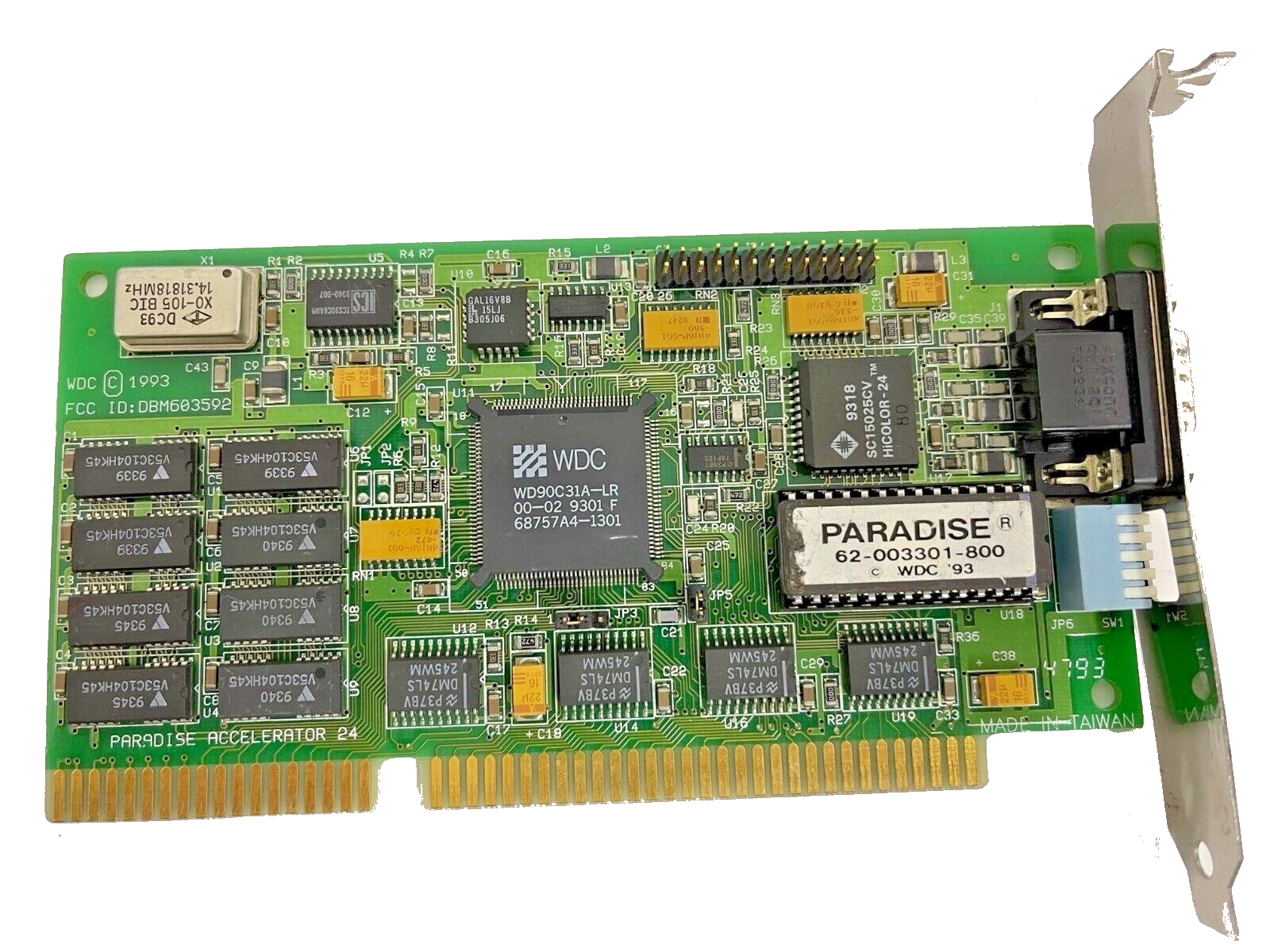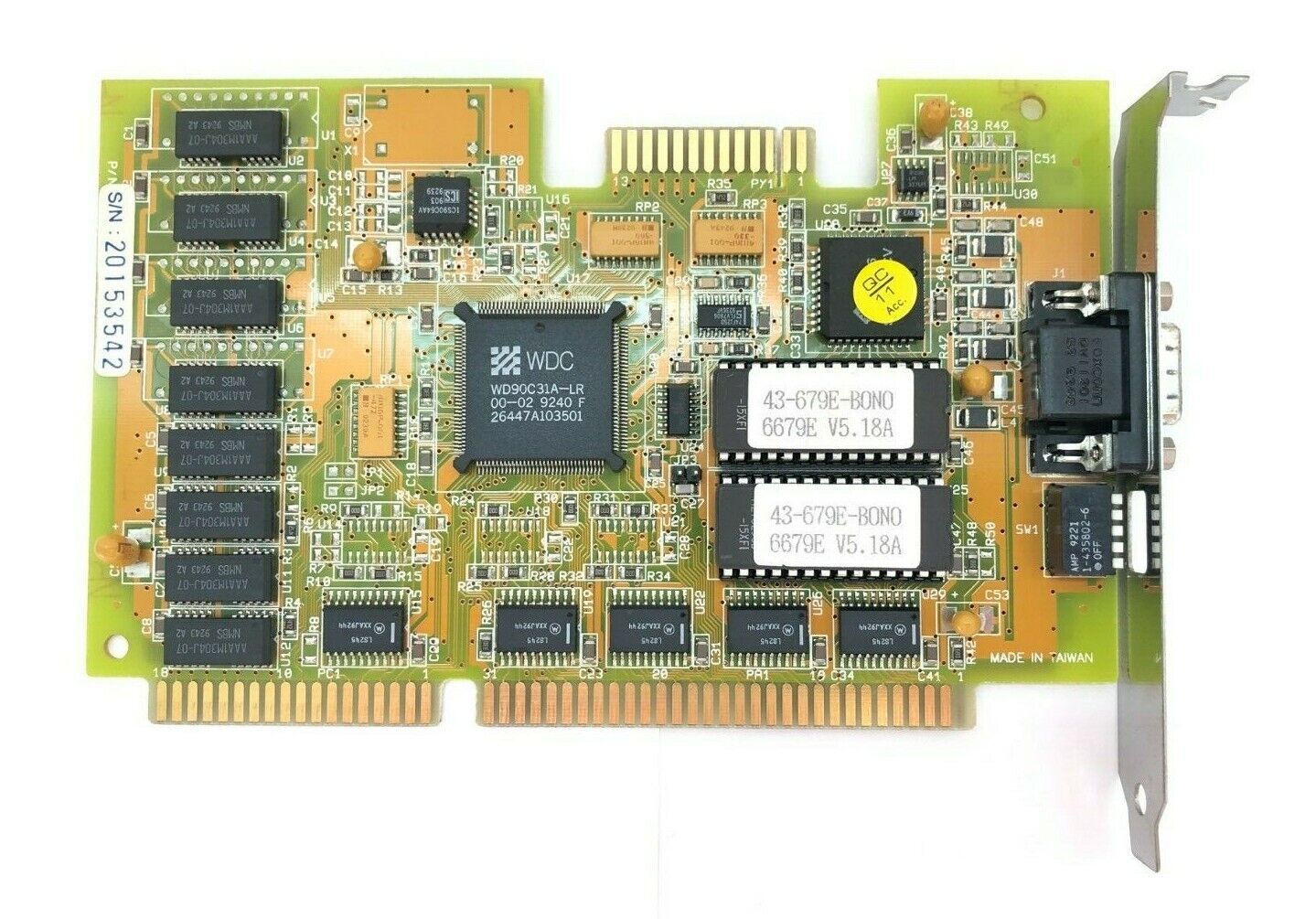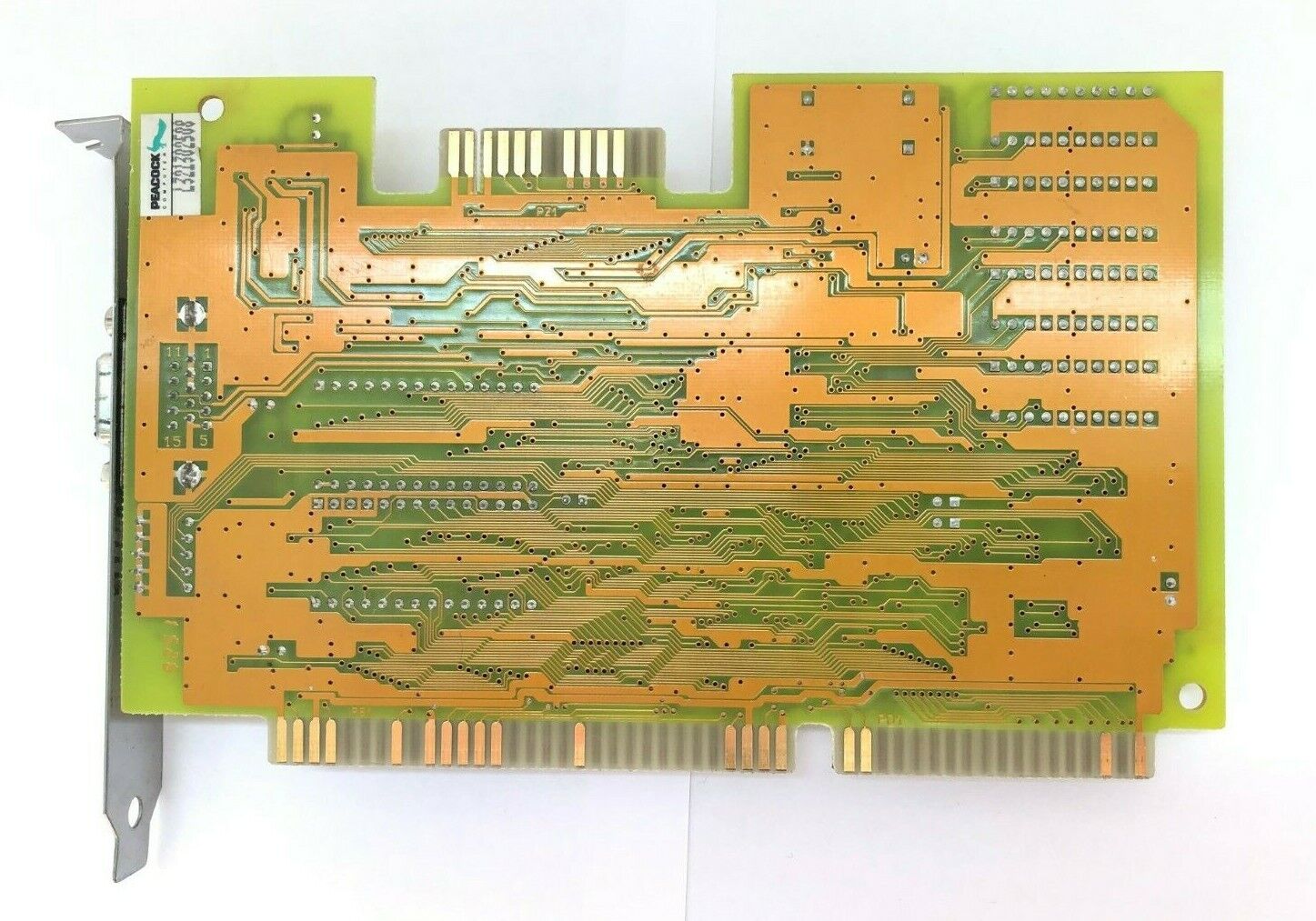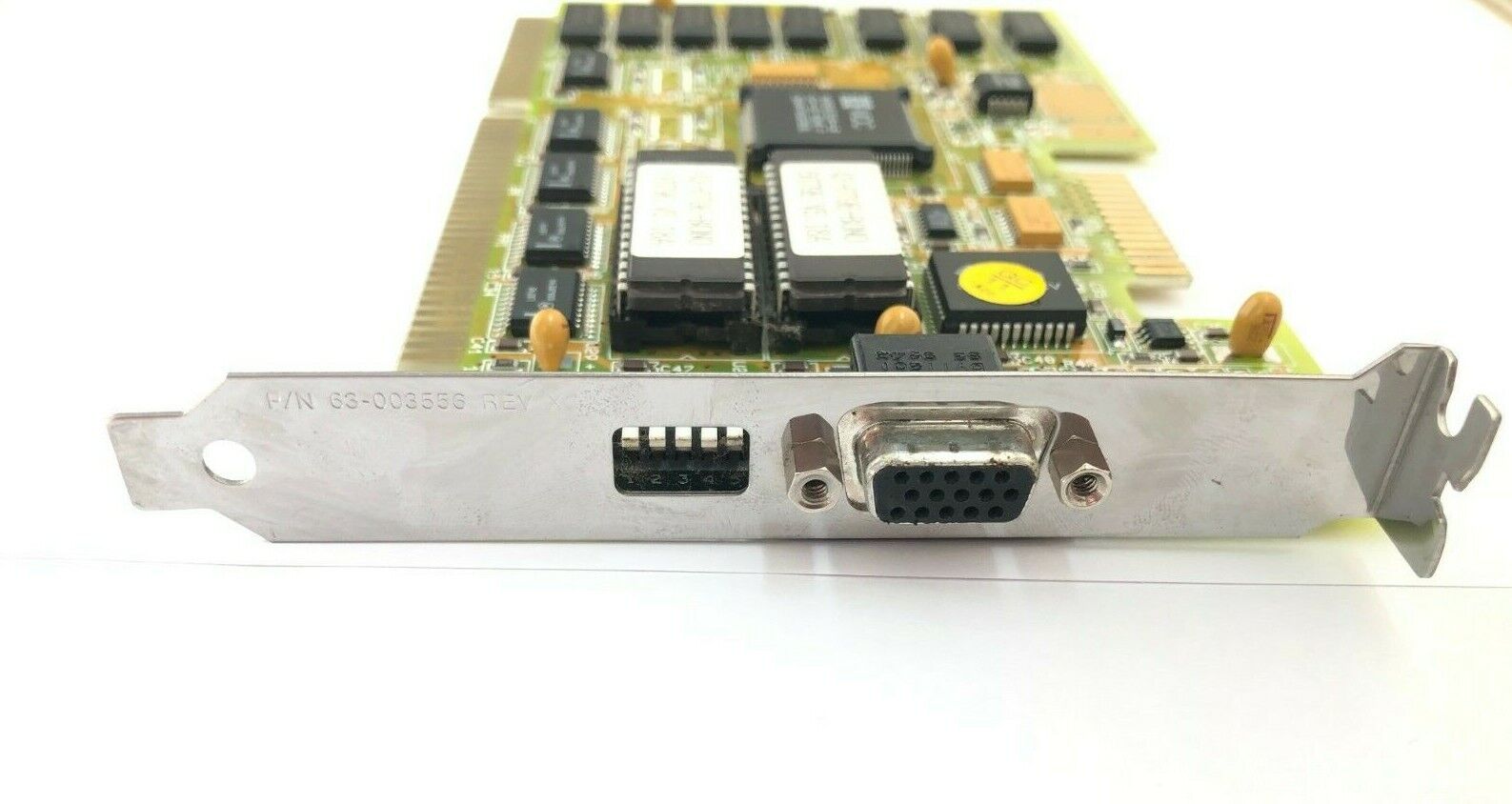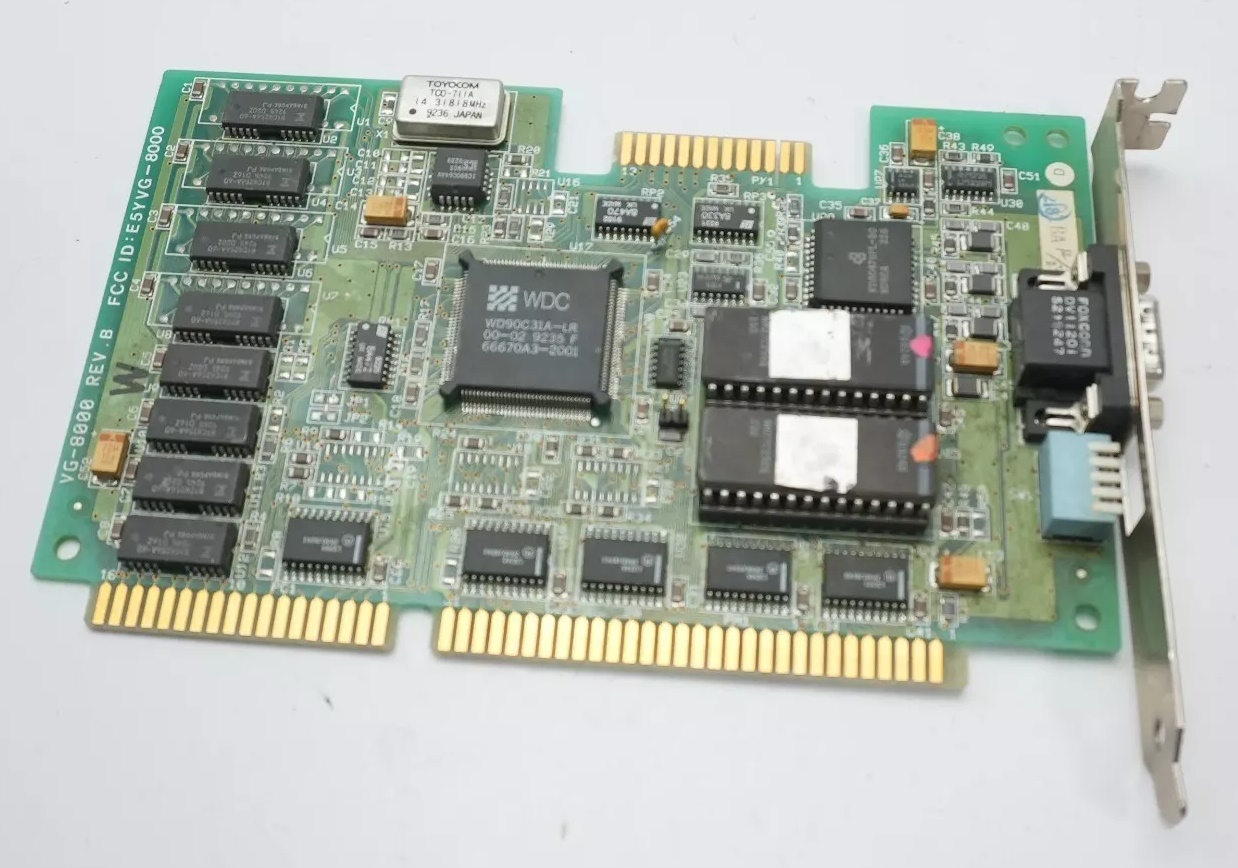WD90C31
This, I believe, was the first card to be released after Philips acquired Western Digital Imaging (formerly Paradise Systems).
Probably the most prominent card to use the WD90C31 was the Diamond SpeedSTAR 24X. It uses a TrueColor DAC which provides 16.7 million colours.
|
Released | 1992 |
| Bus | ISA 16-bit | |
| Chipset | Western Digital WD90C31 | |
| Standards | MDA, Hercules, CGA, EGA, VGA | |
| Memory | 256 KB to 1 MB | |
| Ports | 15-pin DSUB (RGB analogue out) | |
| RAMDAC | Sierra Semiconductor SC15025CV (80 MHz) or AT&T ATT20C492 (80 MHz) | |
| FCC ID | DBM603592 (Paradise Accelerator 24), ILLVGPDW (Britek 1 MB), E5YVG-8000 (DFI VG-8000) | |
| See Also | WD90C30, WD90C33 |
The WD90C31 was an evolution of their earlier WD90C30 graphics chip, adding a hardware cursor, BitBLT transfers (using rectangle or linear addressing), raster operations, transparency, plane masking and 8 by 8 colour patterns. These new built-in hardware functions were designed for provide performance improvements in Windows. Aside from these, the WD90C31 was the same as the earlier WD90C30, running its core at 80 MHz and memory at up to 50 MHz.
The chip supported screen resolutions up to 1024 x 768 in 256 colours non-interlaced at a 72 Hz refresh rate. Its onboard memory could range from 256 KB up to 1 MB with DRAM speeds of 60ns, 70ns, 80ns or 100ns.
The WD90C31 provides good on-chip register-level compatibility with Hercules, CGA and EGA, in addition to AT&T 6300/Olivetti M24 graphics.
PCs that came bundled with the WD90C31 graphics card include:
- AST Power Premium 4/50d (486DX2-50 machine)
- Austin 486 WinStation DX2-50 (Paraise M6V card with 1 MB video memory)
It was also used embedded on the motherboard of the Toshiba T6600C 486DX/2-66 luggable. It came with the full 1 MB of video memory.
Click here for the WD90C31 datasheet.
I have no information on the card shown above, aside from the fact it is reportedly made by Philips. The pictures at the bottom are my Britek Electronics 1 MB card with FCC ID: ILL VGPDW.
Variants
The WD90C31 came in two model variants:
- WD90C31-LR and WD90C31A-LR
- WD90C31-ZS
I have no information on the differences between these.
Competition
Still running on the ISA bus, the WD90C31 was a pretty high-performing chip. 1992 was really the year hardware graphics acceleration began - Windows use was becoming more popular over DOS, so moving pixels around more efficienctly without using the CPU was the goal. Because of this, graphics chipset manufacturers began offering new chipsets that provided some hardware graphics acceleration including BitBLT (bit block transfers), hardware cursor, and more. With Windows drivers that supported these chipsets, Windows performance was dramatically improved over 'dumb' frame buffers that came before.
1992 (and to an extent late 1991) was also the year VRAM video memory was being used on graphics cards. VRAM was more efficient than standard DRAM, and further improved graphics performance in Windows. Such examples of VRAM-based cards include the Orchid Fahrenheit 1280, ATI Graphics Ultra and Diamond Stealth VRAM. The WD90C31 could only use the less-efficient DRAM.
In the Media
This chip set has consistently generated balanced DOS-based and Windows graphics results during previous tests, and is a good general-purpose video chip set."
PC Magazine, September 1992
Setting it Up
Most WD90C31-based cards have a DIP switch block on the backplate. Their settings are described below:
| Switch | Meaning | Notes |
|---|---|---|
| SW1 / SW2 | 800 x 600 Refresh Rate | Off/Off = 56.5 Hz (35.12 kHz horiz.) On/Off = 72.1 Hz (37.83 kHz horiz.) Off/On = 60.5 Hz (46.67 kHz horiz.) On/On = 56.5 Hz (35.12 kHz horiz.) |
| SW3 / SW4 | 1024 x 768 Refresh Rate | Off/Off = 86.7 Hz interlaced (35.6 kHz horiz.) On/Off = 70.2 Hz non-interlaced (56.56 kHz horiz.) Off/On = 60.2 Hz non-interlaced (48.47 kHz horiz.) On/On = 72.3 Hz non-interlaced (59.46 kHz horiz.) |
| SW5 | Font selection *or* VGA montior type |
If font selection: Off = Standard font spacing On = TUV (German standard) font spacing If VGA monitor type: Off = 60-70 Hz vertical refresh rate, 31.5 kHz horizontal refresh rate On = 76-88 Hz vertical refresh rate, 40 kHz horizontal refresh rate |
Some cards came with a VGA feature connector at the top, either as an edge connector or a 26-pin header - this was rarely used but can provide access to the display output of the WD90C31 for any connectable peripherals.
Several jumpers may also exist:
JP3 (near the lower-right corner of the WD chip) - If jumpered or set to 1-2 on a 3-pin jumper block, this sets the card up for zero wait state (0WS) operation. Open or set to 2-3 on a 3-pin jumper block would add a single wait state to I/O operations to the card.
JP4 (to the right of the memory banks) - If present, 1-2 indicates 1 MB of memory installed, 2-3 for 512 KB.
Downloads
WD90C31 Datasheet Preliminary datasheet from Western Digital |
DOS Utility Disk Contains DOS drivers for AutoCAD, AutoShade, Lotus 1-2-3 2.2.1/2.01/2.2, Lotus Symphony 1.0/1.1/1.2, VersaCAD v5.4, Word 5 & 5.5, and WordPerfect 5.0 & 5.1. |
Windows 3.1 Drivers Contains Windows 3.x display drivers for Paradise Super VGA card. Supports resolutions up to 1280 x 1024 in 16 colours, or 1024 x 768 in 256 colours. |
More Pictures


Paradise Accelerator 24 (FCC ID: DBM603592)
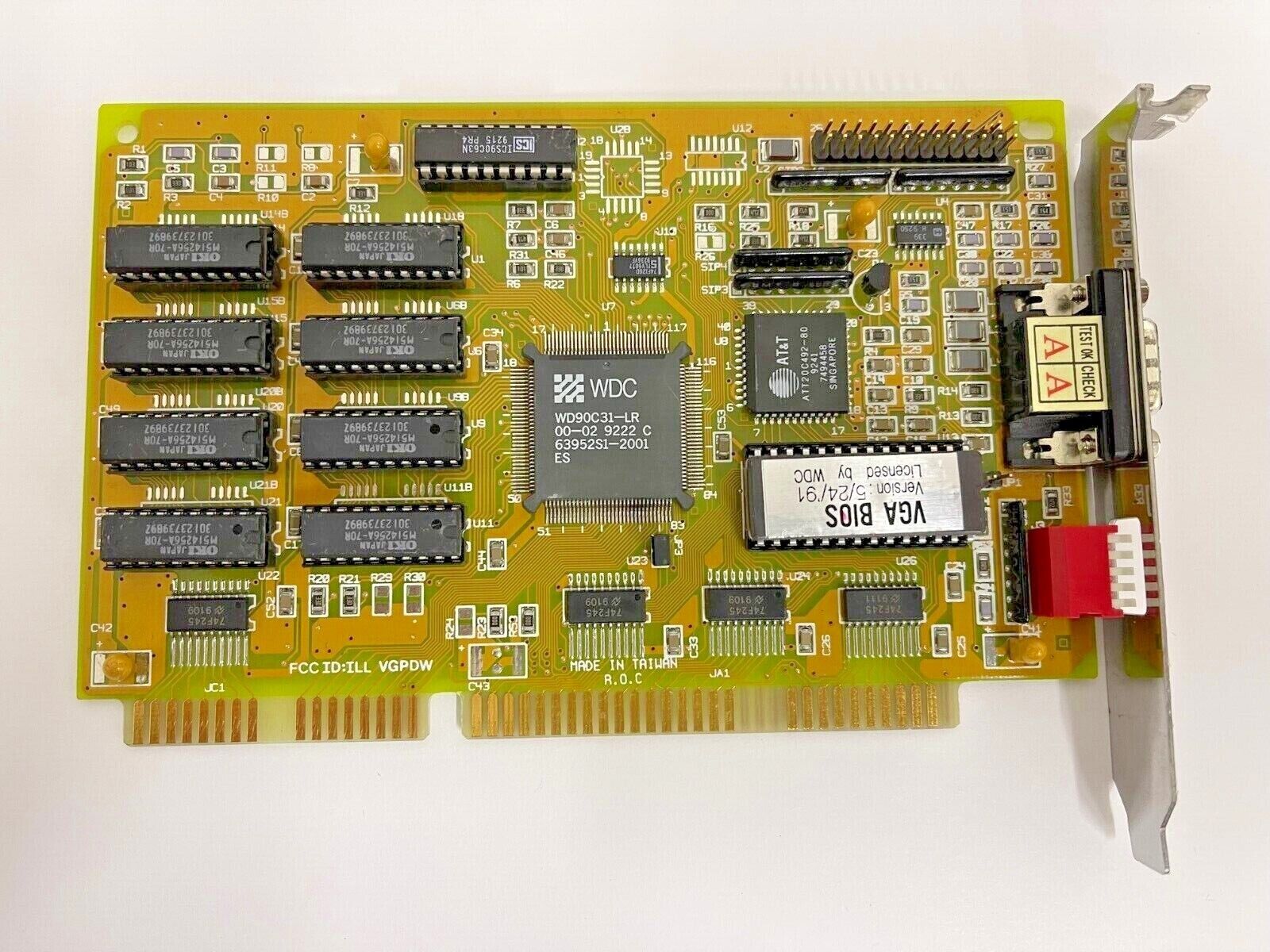

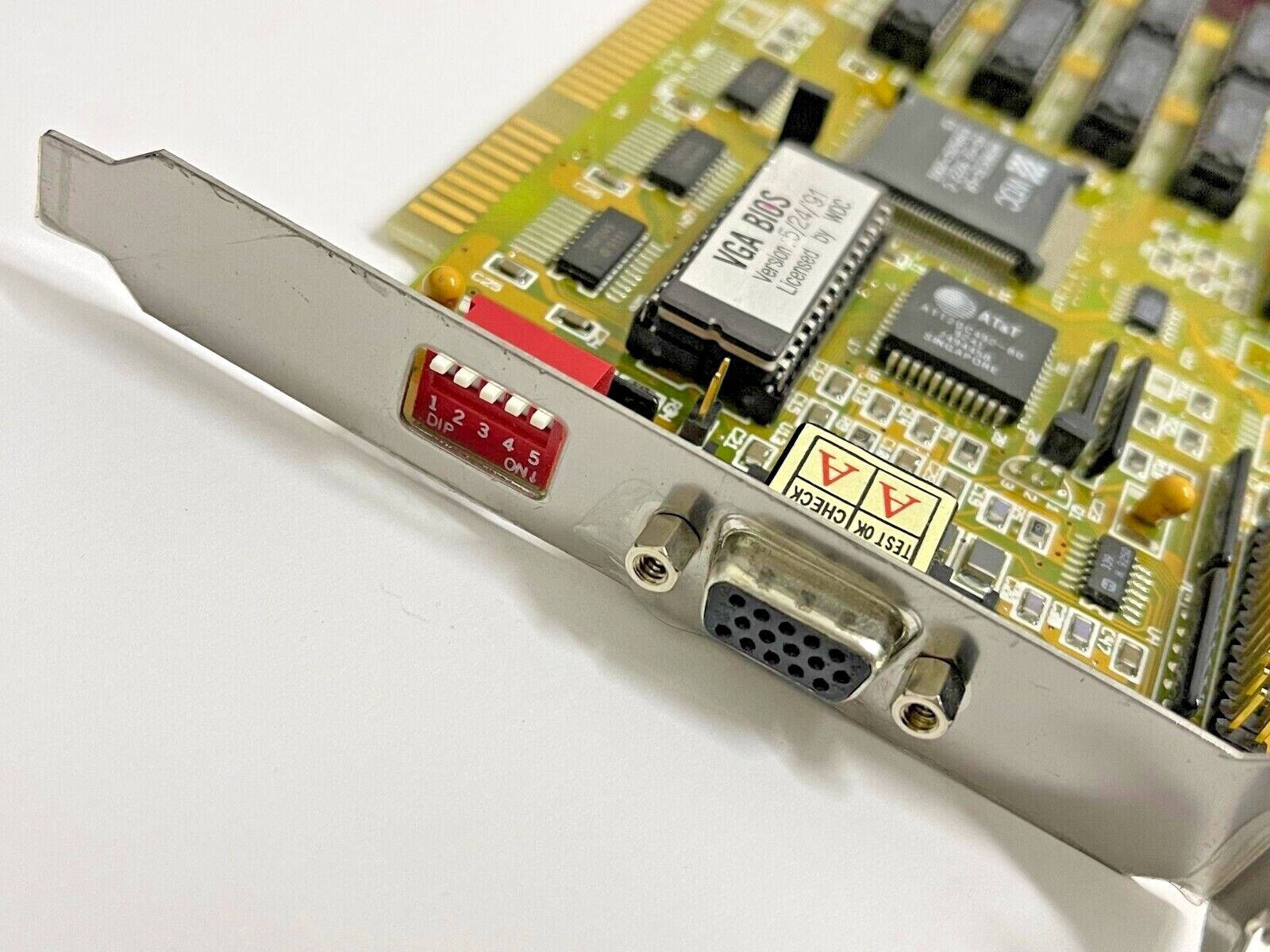
Britek Electronics 1 MB card (FCC ID: ILLVGPDW)
